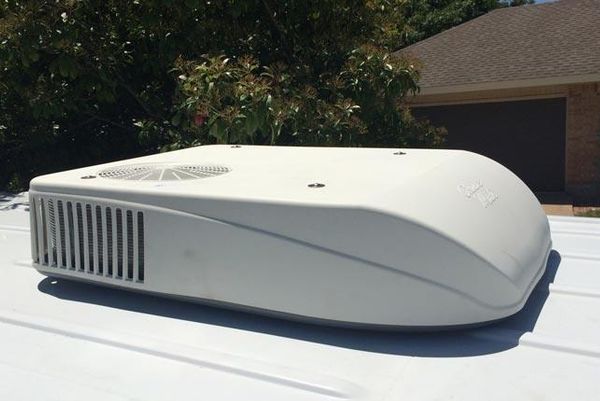
RV AC Ducted vs Non-Ducted: Differences and Comparison
There are two types of air conditioning systems in RVs and they do the same job. Comparisons will always be made and people will take one side or the other. They will also disagree on which one is best
RV AC Ducted vs Non-Ducted: The basic differences in operation between the two systems is that one model uses air ducts to direct the cool air flow. The other style simply just blows air out of its bottom and lets the air go where it pleases.
To find out more of the differences and see how they compare, just continue to read our article. It is filled with the information you need to know to help you find the right system for you.
RV Air Conditioner Ducted

This system uses a series of air ducts to distribute the cool air throughout your RV. You have better control over which parts get cooler than others. The ducts are laid out in a systematic pattern to ensure your RV gets the best air flow possible.
You do not lose any CFM or BTUs when you have a ducted system. Those elements are part of the air conditioning design and has nothing to do with the ducts. The one main issue with the ducted system is that the longer the ducts, the air flow may weaken.
For example, a 13,500 BTU air conditioner usually puts out about 300-350 CFMs. This will not change because the cool air is blown through a duct system. A ducted system may be a bit more efficient as you can get every part of your RV covered and not have hot spots.
In some cases there may be an emergency handle to pull in case your air ducts get clogged somehow. Pulling the handle stops the air conditioner from using the ducts and just blows the air out like a non-duct system.
Also, a duct system is easily modified if there are cooling problems.
RV Air Conditioner Non-Ducted
As already stated the non-ducted system simply blows air into your RV from its central roof top location. Unless you have two AC units. Then they will cover their independent zones and make sure you have uniform coverage.
One of the big differences between the two systems come sin when you need to replace your AC unit. The non-ducted system does not have to worry about matching up with the existing duct pipes.
You can just remove the old non-duct air conditioner and put a new one in its place. The only hassle here would be making sure you got all the wiring and other connection issues hooked up correctly.
The other difference is that this system does not really have an even distribution of air and you may end up with hot and col spots throughout your RV. This of course will depend on the size of your RV, the age of the AC unit and more factors.
A ductless system may be the way to go if you are not concerned about air flow as much as you are repair or replacement costs. When it comes to producing cool air and fan speeds, then the 2 systems are about equal.
When You Should Choose Between The Two
Since both styles of air conditioners produce the same amount of BTUs and CFMs, then you need other criteria to help you choose which one is right for you and which one you should buy, Sometimes those factors are not the same.
When to choose a ducted AC unit:
- There is ducts already in place inside your RV- You could go with a ductless system here but then you are left with the problem of what to do with the existing ducts
- You face high humidity levels- a duct system is better at lowering humidity levels inside your RV.
- You need better air flow-a ducted system can produce better air flow and keep it directed at those areas you need cooled the most. They are also easier to modify to improve that air flow.
- Looks matter- a ducted air conditioner does not have part of its system inside your RV. Its parts are usually hidden behind a wall or the ceiling.
- Keeping repair costs down- a ducted air conditioner has fewer parts to break and repair. Your maintenance costs can be lower.
When to choose a non-ducted system:
- Small spaces behind the walls- if there is no room to hide the ducts or the air conditioner in the walls or ceiling, then you need a ductless AC.
- Less dust- ductless AC units do not gather dust as much as a ducted system. If you have an allergy sufferer in your RV this will avoid triggering it.
- When you want a 2nd AC unit- A ductless system makes it easier to add another unit if your RV is large or the day gets too hot an done just won’t cut it.
- If you make changes to your RV’s interior. Changes can block vents or influence the design making it hard to make alterations. A ductless system solves those problems for you.
Some Final Comments
What it all boils down to is your personal preference. Whether you use a ducted RV air conditioner or a non-ducted one depends on your own tastes and how healthy your family is.
Both units match up the same in the most important aspects of air conditioning. One is not better than the other except in the fine details. Each have their pros that help out in different situations.
They also have their negative aspects which helps you decide which one is best for you. Plus, how your current RV is designed will help you make that decision. The best thing to do is look at your RV, see its current design and talk to the experts.
They will have the knowledge to let you know which one is best for you.

